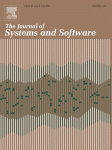A citation index is a kind of bibliographic index, an index of citations between publications, allowing the user to easily establish which later documents cite which earlier documents. A form of citation index is first found in 12th-century Hebrew religious literature. Legal citation indexes are found in the 18th century and were made popular by citators such as Shepard's Citations (1873). In 1961, Eugene Garfield's Institute for Scientific Information (ISI) introduced the first citation index for papers published in academic journals, first the Science Citation Index (SCI), and later the Social Sciences Citation Index (SSCI) and the Arts and Humanities Citation Index (AHCI). American Chemical Society converted its printed Chemical Abstract Service into internet-accessible SciFinder in 2008. The first automated citation indexing was done by CiteSeer in 1997 and was patented. Other sources for such data include Google Scholar, Microsoft Academic, Elsevier's Scopus, and the National Institutes of Health's iCite.
Scopus is an abstract and citation database launched by the academic publisher Elsevier in 2004.
The impact factor (IF) or journal impact factor (JIF) of an academic journal is a scientometric index calculated by Clarivate that reflects the yearly mean number of citations of articles published in the last two years in a given journal, as indexed by Clarivate's Web of Science.
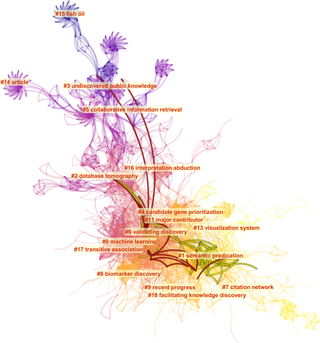
Bibliometrics is the application of statistical methods to the study of bibliographic data, especially in scientific and library and information science contexts, and is closely associated with scientometrics to the point that both fields largely overlap.
In the context of software engineering, software quality refers to two related but distinct notions:

Google Scholar is a freely accessible web search engine that indexes the full text or metadata of scholarly literature across an array of publishing formats and disciplines. Released in beta in November 2004, the Google Scholar index includes peer-reviewed online academic journals and books, conference papers, theses and dissertations, preprints, abstracts, technical reports, and other scholarly literature, including court opinions and patents.
Citation impact or citation rate is a measure of how many times an academic journal article or book or author is cited by other articles, books or authors. Citation counts are interpreted as measures of the impact or influence of academic work and have given rise to the field of bibliometrics or scientometrics, specializing in the study of patterns of academic impact through citation analysis. The importance of journals can be measured by the average citation rate, the ratio of number of citations to number articles published within a given time period and in a given index, such as the journal impact factor or the citescore. It is used by academic institutions in decisions about academic tenure, promotion and hiring, and hence also used by authors in deciding which journal to publish in. Citation-like measures are also used in other fields that do ranking, such as Google's PageRank algorithm, software metrics, college and university rankings, and business performance indicators.
ACM Transactions on Graphics (TOG) is a bimonthly peer-reviewed scientific journal that covers the field of computer graphics.

Allen Taflove was a full professor in the Department of Electrical and Computer Engineering of Northwestern's McCormick School of Engineering, since 1988. Since 1972, he pioneered basic theoretical approaches, numerical algorithms, and applications of finite-difference time-domain (FDTD) computational solutions of Maxwell's equations. He coined the descriptors "finite difference time domain" and "FDTD" in the 1980 paper, "Application of the finite-difference time-domain method to sinusoidal steady-state electromagnetic penetration problems." In 1990, he was the first person to be named a Fellow of the Institute of Electrical and Electronics Engineers (IEEE) in the FDTD area. Taflove was the recipient of the 2014 IEEE Electromagnetics Award with the following citation: "For contributions to the development and application of finite-difference time-domain (FDTD) solutions of Maxwell's equations across the electromagnetic spectrum." He was a Life Fellow of the IEEE and a Fellow of the Optical Society (OSA). His OSA Fellow citation reads: "For creating the finite-difference time-domain method for the numerical solution of Maxwell's equations, with crucial application to the growth and current state of the field of photonics."
Journal ranking is widely used in academic circles in the evaluation of an academic journal's impact and quality. Journal rankings are intended to reflect the place of a journal within its field, the relative difficulty of being published in that journal, and the prestige associated with it. They have been introduced as official research evaluation tools in several countries.
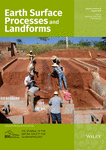
Earth Surface Processes and Landforms is a peer-reviewed scientific journal published by John Wiley & Sons on behalf of the British Society for Geomorphology. It covers geomorphology and more in general all aspects of Earth sciences dealing with the Earth surface. The journal was established in 1976 as Earth Surface Processes, obtaining its current name in 1981. The journal primarily publishes original research papers. It also publishes Earth Surface Exchanges which include commentaries on issues of particular geomorphological interest, discussions of published papers, shorter journal articles suitable for rapid publication, and commissioned reviews on key aspects of geomorphological science. Foci include the physical geography of rivers, valleys, glaciers, mountains, hills, slopes, coasts, deserts, and estuary environments, along with research into Holocene, Pleistocene, or Quaternary science. The editor-in-chief is Stuart Lane.
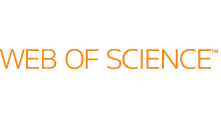
The Web of Science is a paid-access platform that provides access to multiple databases that provide reference and citation data from academic journals, conference proceedings, and other documents in various academic disciplines. Until 1997, it was originally produced by the Institute for Scientific Information. It is currently owned by Clarivate.

System is a peer-reviewed academic journal covering the applications of educational technology and applied linguistics to problems of foreign language teaching and learning. It was established in 1973 and is published by Elsevier. As of 2023, the editors-in-chief, in alphabetical order, are Idoia Elola, Mairin Hennebry, Jim McKinley, Lawrence Jun Zhang, and Yongyan Zheng. The associate editor is Vincent Greenier, the book reviews editor is Pascal Matzler, the editorial assistant is Louise Maskill, and the student editor is Nathan Thomas. Until 2013, System published four issues per year. In 2014, it published six issues, and since 2015 it has published eight issues per year.

Murali Krishna Chemuturi is an Indian software development expert. He authored ten books, six on software development management, one on management, two translations and one on personality engineering. He has also published a number of papers in journals and on the Internet.
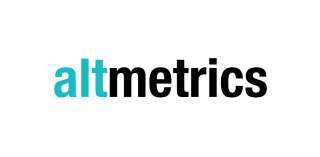
In scholarly and scientific publishing, altmetrics are non-traditional bibliometrics proposed as an alternative or complement to more traditional citation impact metrics, such as impact factor and h-index. The term altmetrics was proposed in 2010, as a generalization of article level metrics, and has its roots in the #altmetrics hashtag. Although altmetrics are often thought of as metrics about articles, they can be applied to people, journals, books, data sets, presentations, videos, source code repositories, web pages, etc.
ResearchGate is a European commercial social networking site for scientists and researchers to share papers, ask and answer questions, and find collaborators. According to a 2014 study by Nature and a 2016 article in Times Higher Education, it is the largest academic social network in terms of active users, although other services have more registered users, and a 2015–2016 survey suggests that almost as many academics have Google Scholar profiles.

T.H. Tse is a Hong Kong academic who is a professor and researcher in program testing and debugging. He is ranked internationally as the second most prolific author in metamorphic testing. According to Bruel et al., "Research on integrated formal and informal techniques can trace its roots to the work of T.H. Tse in the mid-eighties." The application areas of his research include object-oriented software, services computing, pervasive computing, concurrent systems, imaging software, and numerical programs. In addition, he creates graphic designs for non-government organizations.

Vijay Kumar Vaishnavi is a noted researcher and scholar in the computer information systems field with contributions mainly in the areas of design science, software engineering, and data structures & algorithms, authoring over 150 publications including seven books in these and related areas, and co-owning a patent. He is currently Professor Emeritus at the Department of Computer Information Systems, Georgia State University. He is Senior Editor Emeritus of MIS Quarterly and is on the editorial boards of a number of other major journals. His research has been funded by the National Science Foundation (NSF) as well as by the industry.
Semantic Scholar is a research tool for scientific literature powered by artificial intelligence. It is developed at the Allen Institute for AI and was publicly released in November 2015. Semantic Scholar uses modern techniques in natural language processing to support the research process, for example by providing automatically generated summaries of scholarly papers. The Semantic Scholar team is actively researching the use of artificial intelligence in natural language processing, machine learning, human–computer interaction, and information retrieval.
The IEEE Transactions on Learning Technologies (TLT) is a peer-reviewed scientific journal covering advances in the development of technologies for supporting human learning. It was established in 2008 and is published by the IEEE Education Society. The current editor-in-chief is Minjuan Wang of San Diego State University. Formerly, the journal was edited by Mark J.W. Lee of the Charles Sturt University (2019-2022), Wolfgang Nejdl of the University of Hannover (2008–2012), and by Peter Brusilovsky of the University of Pittsburgh (2013–2018).
